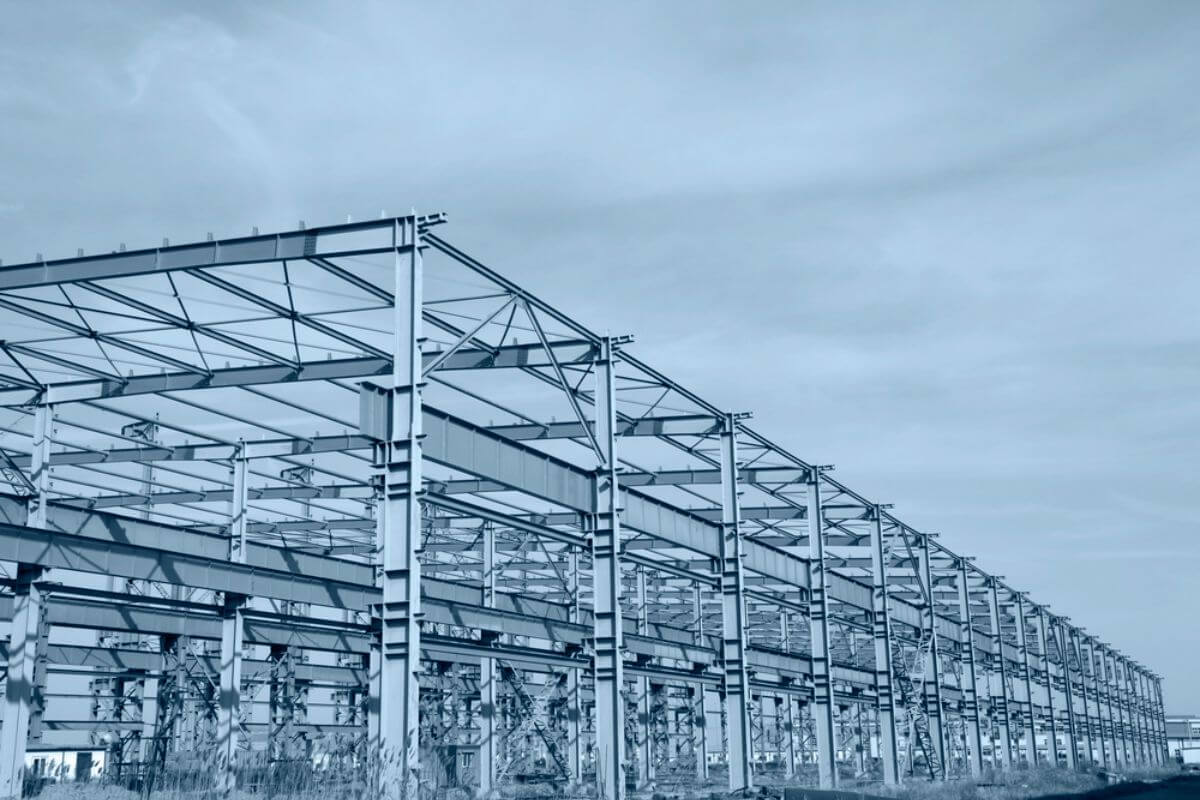How are I Beams used in industrial settings?
- Building frameworks
- Conveyor systems
- Platforms and ramps
- Crane Rails
- Rigging and lifting
Overview
- I-beams offer versatility beyond construction, making them suitable for various industrial applications.
- They are commonly used in building frameworks, conveyor systems, platforms, ramps, crane rails, and in rigging and lifting operations.
- Understanding their industrial uses is essential for optimizing their implementation in different operational contexts.
I-beams, also known as I-sections, are structural steel components with a distinctive cross-sectional shape that resembles the letter “I.” This design consists of two horizontal flanges connected by a vertical web, providing strength and stability.
In industrial settings, I-beams are essential for supporting heavy machinery, equipment, and steel frame structures in factories and warehouses. Their design allows them to handle significant loads and stress, making them a reliable and versatile choice for various applications in these environments.
This article takes a closer look at how I-beams are used in industrial operations, helping you understand their practical benefits.
Building Frameworks

In industrial buildings, I-beams are essential for supporting the weight of floors, walls, and roofs while transferring loads to the foundation. Their ability to span long distances reduces the need for interior columns, maximizing space in structures like warehouses, factories, and office buildings, where open floor plans enhance operational efficiency.
These beams work seamlessly with other structural components, including braces, decking, and columns, providing flexibility in design without compromising stability. Connections between beams and other parts can be tailored to withstand various loading conditions, such as wind or seismic forces.
I-beams serve dual purposes: as horizontal beams, they support loads from the roof and upper floors, and as vertical columns, they bear heavy vertical loads, enhancing the building’s overall stability. This combination is key to maintaining structural integrity in industrial settings.
Conveyor Systems
In addition to their use in frameworks, I-beams are also key components in conveyor systems, particularly in overhead conveyor designs.
For example, I-beam trolley conveyors use the I-beam as a track from which trolleys are suspended. These systems are commonly found in applications like automotive assembly lines, where they help move parts and assemblies, boosting production efficiency.
The heat-resistant properties of I-beams make them ideal for environments with high temperatures, such as paint finishing lines, where they can withstand the heat encountered during painting processes. I-beam conveyors are also effective for transporting heavy loads in warehouses and manufacturing plants.
Platforms and Ramps
I-beams in industrial settings can be used in elevated platforms, which are important for tasks like material handling, giving workers safe access to machinery and equipment for loading and unloading. They can also be used in elevated work areas, such as assembly lines or maintenance spaces, helping improve workflow and organization in manufacturing environments.
Adjusting the size and thickness of I-beams allows them to be tailored to specific load requirements, ensuring platforms can safely support equipment, materials, and personnel. These beams also play a key role in constructing loading and unloading ramps, facilitating the movement of goods between levels or vehicles while distributing heavy loads evenly to prevent bending or failure.
Crane Rails

Crane rails are specialized tracks used to guide and support cranes, particularly in industrial settings. Made from high-strength steel, they’re designed to handle the heavy loads cranes lift. Their design often includes I-beams, which are known for their strong load-bearing capabilities.
I-beams provide essential support for crane rails, ensuring stability and safety during operations by handling heavy loads. Their strong yet lightweight design offers a good strength-to-weight ratio, reducing material use and construction costs. Additionally, their durability minimizes maintenance needs, making them a cost-effective choice over time.
Rigging and Lifting
These beams are also vital in industrial rigging and lifting applications, especially in the construction of lifting devices and other rigging equipment.
In manufacturing plants, I-beams are often used in overhead crane systems to lift heavy machinery, components, and raw materials. Their strong design ensures safe handling of substantial loads, helping streamline production processes and improve operational efficiency.
For instance, they are commonly used to create lifting beams, which are crucial for below-the-hook lifting. Designed to connect to a hoist or crane hook, these beams assist in lifting loads safely and efficiently. I-beams are also used to make spreader beams, which are designed to handle wider loads.
Key Takeaway
Understanding how I-beams are used in many industrial settings can help you determine how to best use them in your operations.
Ensure that your industrial operations are supported by high-quality, durable I-beams from Regan Steel. Our products are designed to meet the toughest demands of your industry, providing reliability and strength for all your structural needs. Contact us today to learn more!






